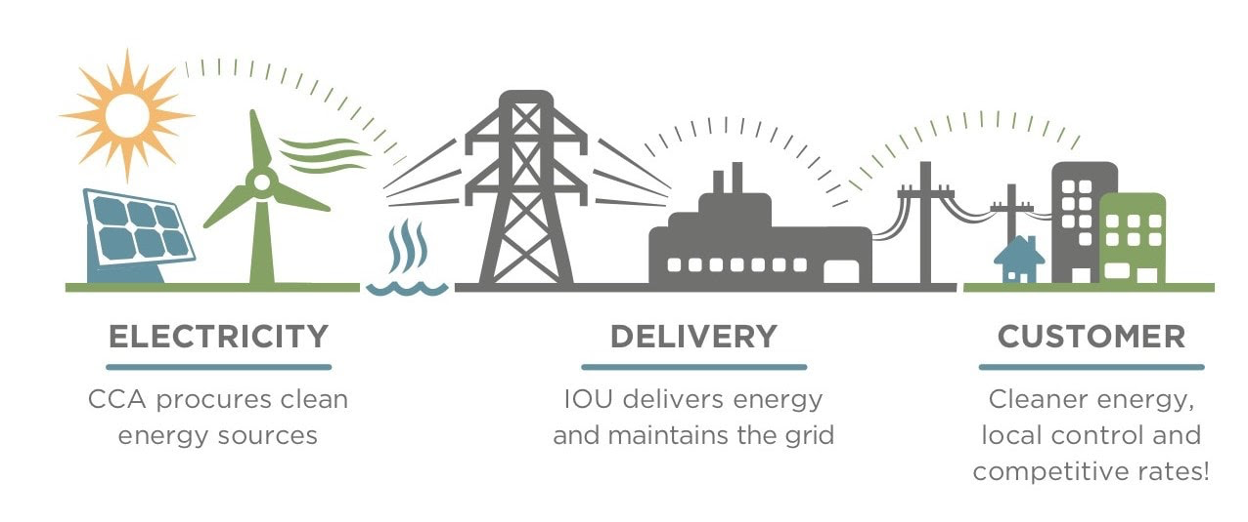
Image source: California Community Choice Association (CalCCA). Used with permission.
What is Community Choice Energy?
Created in 2002 (AB 117) under California law, municipal jurisdictions can create locally-accountable, non-profit alternatives to Investor-owned Utilities (IOUs) that have produced large and powerful for-profit monopolies. This law laid the foundation for enabling more choice for consumers of electric energy.
Existing energy solutions are primarily based on outdated, centralized business models. These models have led to expensive electricity rates. Deteriorating infrastructure and associated distribution models have resulted in numerous catastrophic wildfires in California. Existing strategies for addressing fire dangers – e.g., shutting down distribution of electricity in certain communities – are simply unacceptable.
It’s time for change!
What are CCAs?
Community Choice Aggregators (CCAs) are formed and owned by local communities. Where required, CCAs operate in partnership with existing electric generation energy utilities. They also partner with commercial producers of rapidly evolving new technologies, such as storage batteries and technologies used in the creation of microgrids.
Today, communities that include Marin County; San Mateo; Los Angeles County; the cities of Lancaster, San Francisco, San Jose; and more recently, San Diego County, are demonstrating the value of Community Choice Energy through the development of CCAs. These communities are recognizing the kinds of technical and operational challenges they are facing and will face in the future. The San Diego Energy District (SDED) exists to help them better understand how to most effectively deal with these challenges.
After many years of public discussion, in 2019 the Mayor and San Diego City Council approved community choice and SDG&E began preparing to become a “wires only” utility and get out of the business of buying and selling electricity.
CCA Goals
The goals of CCAs include:
- Decarbonization – reduction of carbon emissions produced during energy production
- Rapid progress toward a 100% clean electricity future
- Safer power distribution infrastructures and technologies
- More economically priced solutions for consumers of electric energy – for ratepayers.
How Do CCAs Work?
Community Choice lets customers choose between electricity suppliers. Some customers like cheaper or more green electricity. Others support this tool for its powerful climate benefits.
Community Choice Aggregators (CCAs) provide more choice, more control, and better pricing options for all customers (ratepayers) in the community.
- Whether operated by a city or a publicly-accountable non-profit, elected representatives of the people are the ones who oversee the program.
- A utility delivers electricity to a CCA members. It maintains the wires and sends the bills.
- A Community Choice program controls its rates and programs. This may include:
– Full Net Energy Metering
– Incentives for Demand Response
– EV Charging
– And more!
Informational Videos
These are videos to help you understand how SDED and those with whom SDED collaborates think about Community Choice Energy and the challenges of achieving a clean energy economy through 100% renewable, locally-generated electricity.
- TEDx talk on The Road to Community Energy – Lane Sharman, San Diego Energy District
- KPBS Interview – “Getting off the Grid” – Lane Sharman, San Diego Energy
- Taming the Duck by SDED 2020 Symposium presenter, John Sarter
- For a historical perspective, watch this 2015 KPBS explanation of how CCAs work.
